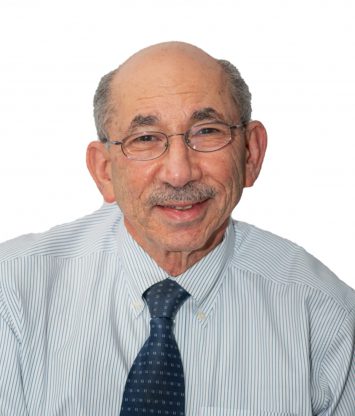 MITCHELL STEIN
MITCHELL STEINMitchell Stein has worked on a host of challenging projects that have helped owners, developers and architects realize their visions in new construction or recladding projects and restore performance to problem or deficient façades to reclaim functional buildings.
When he came to GHSC over 36 years ago, Mitchell Stein was already a 20-year veteran of the building enclosure and skylight industry, having worked as an engineer at Lupton Manufacturing Company, Tube Lite, SWS Industries and Ampat Eastern Corporation. In the years since his joining GHSC he has participated in the design, specification preparation, shop drawing review, observation of mock-up assembly and testing, construction quality assurance observation and field inspection of such diverse projects as; Moscone Center in San Francisco, CA, Los Angeles Convention Center & Walt Disney Concert Hall in Los Angeles, CA, South Campus of Children’s Hospital, Liberty One and Liberty Two in Philadelphia, PA, Cooper Union Engineering Building, 56 Leonard St., Lever House, Times Square Tower, 5 Times Square, 250 West 55th St. and Barnard College in New York, NY, 50 + 60 Binney St. and Draper Laboratory in Cambridge, MA, University of Massachusetts Albert Sherman Center in Worcester, MA, The Point in Boston, MA, the Corning Houghton Park Campus in Corning, NY, 100 College St. in New Haven, CT and the Nelson Atkins Museum in Kansas City, MO.
Known for his creative problem solving and extraordinarily fine understanding of enclosure systems fabrication, assembly and sealing, Mitchell Stein has performed forensic investigation on exterior facades that have had problems with water infiltration, excessive air infiltration, condensation, structural deficiencies, as well as fire damage.
At Draper Laboratory, Mitchell was instrumental in the development, application and rigorous testing of the visionless glass snow guard assembly applied to a multi-faceted skylight system. In addition to rigorous performance mock-up testing, the skylight frames with the visionless glass snow guard assembly was tested in a “Cold Room” laboratory to observe the collection and accumulation of snow and ice and to observe their performance during the melting process.
At the Lever House, for which the Gordon H. Smith Corporation was honored with the Lucy G. Moses Award for Preservation by the New York Landmarks Conservancy, Mr. Stein examined the condition of the stainless steel, glass and carbon steel frame components of the curtain wall. He assisted in the design of a new concealed aluminum glazing system, specifications development and provided quality assurance observation for the re-cladding. The award was presented for preservation of the building’s aesthetics while updating its performance.
For the Cooper Union Academic Building Mitchell Stein assisted in the development of a double skin wall system, where the inner wall was a barrier wall system and the outer wall was a unitized framing system with decorative perforated stainless steel panels. The pattern cut stainless steel panels consisted of different sizes, shapes and challenging out of plane panel assemblies, along with operable stainless-steel panels to control light entering into the building. In addition to observations of performance mock-up assembly and testing, the decorative perforated stainless steel panels were tested in a “Cold Room” laboratory to observe the collection of accumulated snow, ice and the process of melting snow.
At the Nelson Atkins Museum of Art, Kansas City, MO, Mr. Stein developed the perimeter framing system to support the channel glass planks for both single span and twin span planks. He was involved in the performance of mock-up testing to ensure the channel glass system could accommodate vertical inter-story and differential movement and lateral drift. Mr. Stein participated in the analysis and testing of ballistic impact on the channel glass units. He collaborated with the MEP professionals in the closely coordinated design and installation of the unique translucent exterior skin to manage the effects of interior humidity and potential condensation.